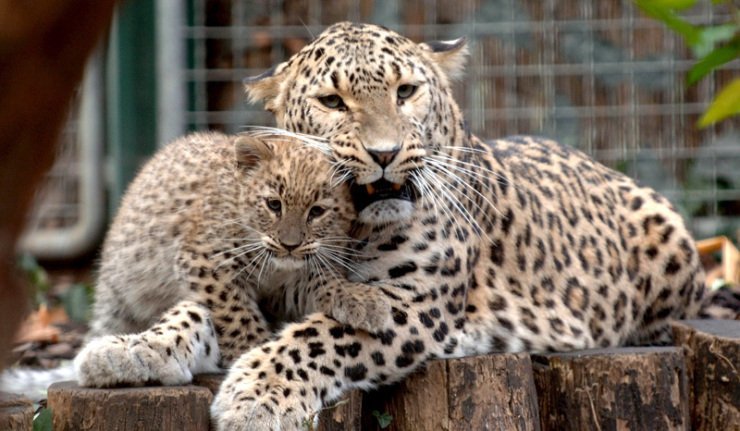Natural mating raises hope for Persian leopard conservation

TEHRAN – Two Persian leopards mated naturally for the first time at Tehran Zoological Garden on Wednesday and will breed by the next 100 days in case of reproductive success, Mehr news agency reported.
After diagnosing the female leopard and checking the male leopard sperm, their reproductive health has been ensured, so we decided to take hormonal interventions in order to increase the probability of estrous detection and insemination, Iman Memarian, Tehran Zoological Garden director said.
Given that Kija, the female leopard, and Gaspar, the male one, are both healthy, there is a very high chance of achieving a live birth within less than 4 months, he highlighted.
Leopard litters typically contain two cubs, although litters can number up to six cubs, he said, adding, Kija may give birth to a litter of one or two cubs, while it is not farfetched that the number of cubs increases due to natural mating.
Gaspar sent to Iran since a year and a half ago, he stated, adding that this natural reproduction success has happened for the first time in the country.
Emphasizing on the importance of success in captive breeding or artificial insemination of Asiatic cheetahs, he noted that although cheetah’s reproduction is more complicated due to low quality of sperm, we hope that this pave the way for cheetahs breeding as well.
The Persian leopard is listed as Endangered on the International Union for Conservation of Nature (IUCN) Red List; the population is estimated at fewer than 871–1,290 mature individuals and considered declining.
According to the Department of Environment, 156 leopards have been killed in Iran from 2005 to 2014, nearly 20 leopards a year. Studies indicate that currently there are less than 500 leopards nationwide.
Persian leopards are mainly threatened by poaching, depletion of their prey base due to poaching, human disturbances, habitat loss due to deforestation, fire, agricultural expansion, overgrazing, and infrastructure development.
In Iran, primary threats are habitat disturbances followed by illegal hunting and excess of livestock in the leopard habitats. The leopards’ chances for survival outside protected areas appear very slim.
FB/MG
